
Looking for Shelter in Rainy Folcalquier
A rainy evening in Provence. I am sure after a hot and dry summer, the earth is just soaking up all the rain right now and rejoicing. Back at home in Oregon, it has been in the 80’s and simply not letting summer go. If I wasn’t in France, I’d be a tad envious now.
Today was the day we were originally planning on going to Parc du Verdon (which would have been at least a two hour drive each way. It was timed so we could hit the Monday market in the town of Folcalquier en route. Well, we decided to go ahead with exploring the towns in that part of the Luberon, as the markets and gardens appealed to us. It started raining, shortly before we left Gordes, which was a bit of a surprise, since we had had such great weather. Heading out the door at 9am, we got to Folcalquier by shortly after 10am. I was impressed that even in the rain, so many vendors were out there selling their wares and we picked up some vegetables for dinner. I was especially drawn to the wild mushrooms – the chanterelles and cèpe were calling our names — and we picked up a large bag of chard greens as well. The portions of vegetables served at French restaurants are surprisingly small and thoughts of braised greens were swirling around my head.
There were booths selling olives and some of them had close to 30 varieties, all mouthwatering. Now, the rain REALLY started coming down hard. Not just cats and dogs, but large ones at that. It wasn’t long, before the bottom fell out of the market. The canopies were collecting water and I would watch the vendors drain the canopies and watch virtual rivers stream out of them. The market was disappearing before our eyes.
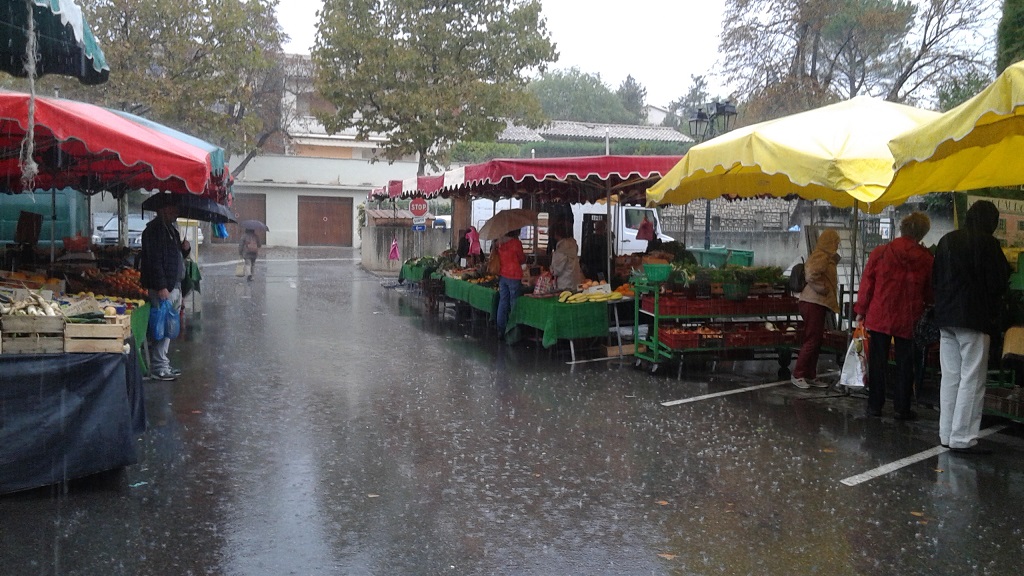
French Marches Are Full of Troopers
I suggested we get breakfast/lunch somewhere warm and inviting. We found a bistro serving Provencal comfort food and they even let us inside 30 minutes before they opened, just so we could get out of the downpour and warm up. Lamb and deer were on our plates in a little bit and we got to have a salad with the Banon cheese that we had sampled last night. The interesting part, is that it was served with the chestnut leaves under it (which are dried and brown and not edible), so one must remove the chestnut leaves, so it doesn’t become one with your salad (yuck!).
We walked up to the Citadel, which is the highest point in the city, and where the old chapel used to be (there is still some of it left) when Folcalquier was the hub of Provencal activity. It was a nice steep climb and the 360 views are completely worth the trek.
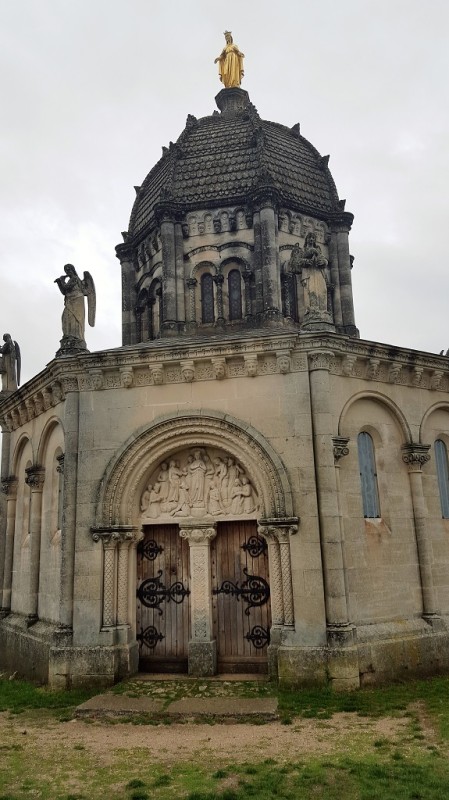
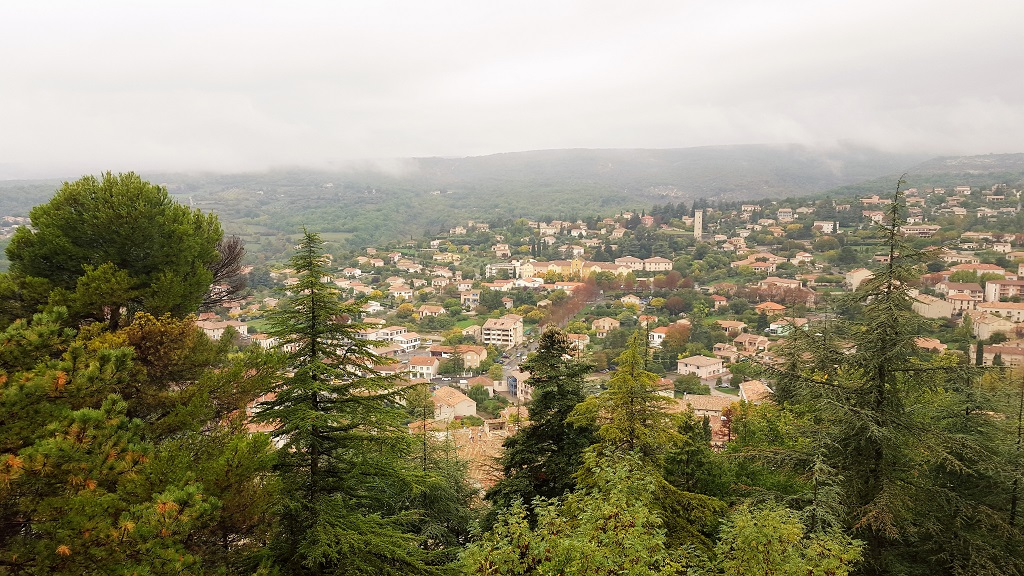
The Citadel with Panoramic Views
I was hoping to get some absinthe at the market, but since the market dissolved in the rain, that didn’t come to fruition. I did however read about a distillery named Distilleries et Domaines de Provence, that sells the spirits in a brick and mortar store. I am not one for sloshing down alcohol, but figured it would make great gifts. After another wild goose chase with Miss Google, we found the store and both bought some spirits. I got some pastis, which is mentioned many times in Peter Mayle’s, A Year in Provence, and certainly deserves to be called the regional drink of Provence, or, at least the regional aperfif. It is an anise based drink, although it has other herbs and spices in it, from different parts of the world.
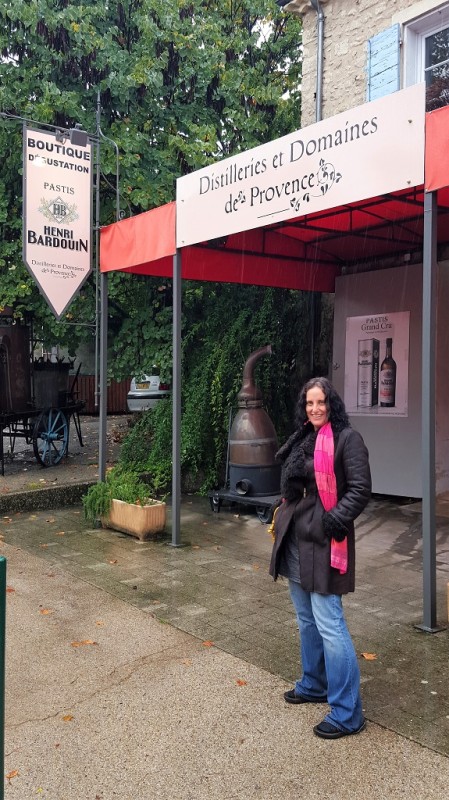
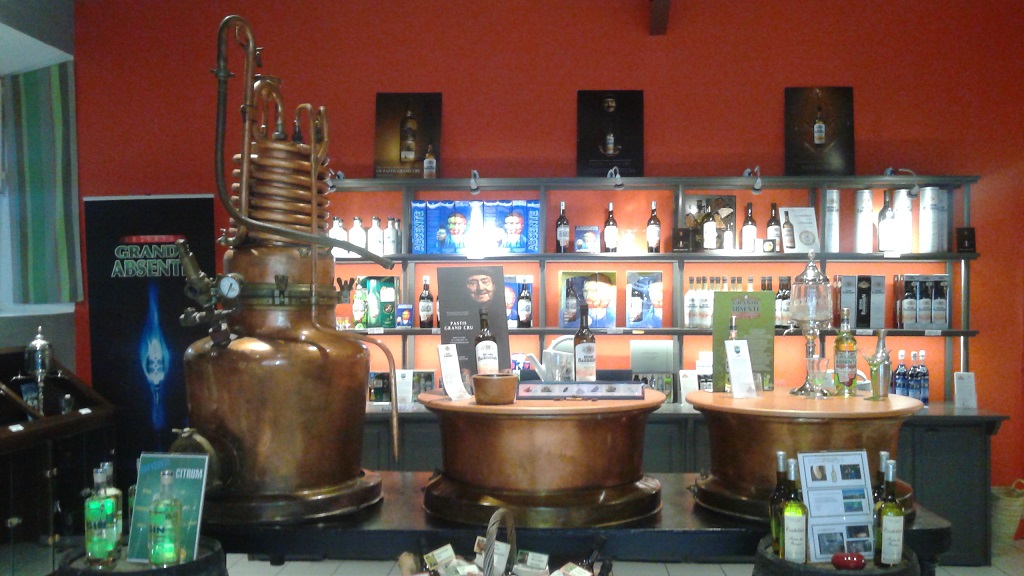
A Small Scale Distillery with the Renown Pastis
A few miles out of Folcalquier is the very small town of Mame and it is renowned for its gardens and the monastery, Prieure de Salagon. Actually, it’s collection of gardens, all with different themes, clustered around a 13th century monastery, which also has exhibits. Since we are both avid gardeners we set out to explore, even though we were getting drenched by the downpour.
The gardens are as follows. The popular and village plants garden – this focuses on the Haute-Provence plants, although I can tell you, the Europeans brought a lot of these plants to the New World, so any American admiring the gardens will recognize the plants. The medieval garden – plants that were used in Western Europe before the “discovery” of the New World. These plants have been mentioned in manuscripts and old pharmacopoeia. It was broken down into kitchen plants, medicinal plants, flowers and secret plants (that have the potential to be toxic). There was a section that was laid out in a similar fashion to older gardens where lovers would sneak off for their rendezvous. The modern gardens – it identifies plants as to where they originated on the globe. It explains the progress from hunter-gatherers, to agrarian cultures. And the fragrance garden is the most recent. It has plants that smell pleasant or unpleasant, and indicates what part of the plant concentrates the aroma.
In truth, a lot of the plants overlapped with their uses. And this is because plants that have scents or are culinary or have potent constituents, regardless of if they are native to the new world or Europe, are medicinal in nature. It was a bit of bummer to not linger longer, at arguably one of the most peaceful spots in the region, but the feeling like a drowned rat experience was getting tiring and the idea of getting home was rather comforting.
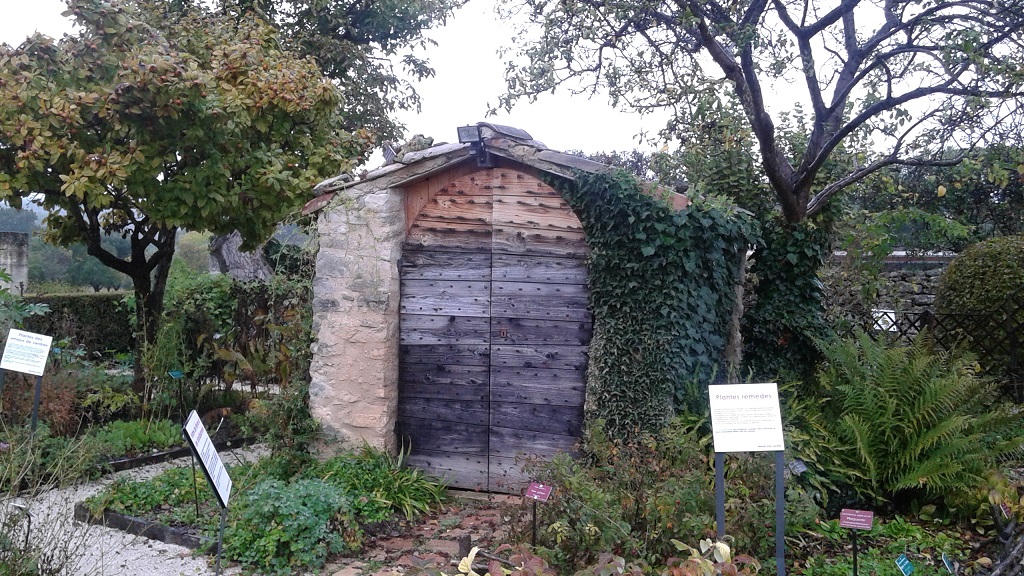
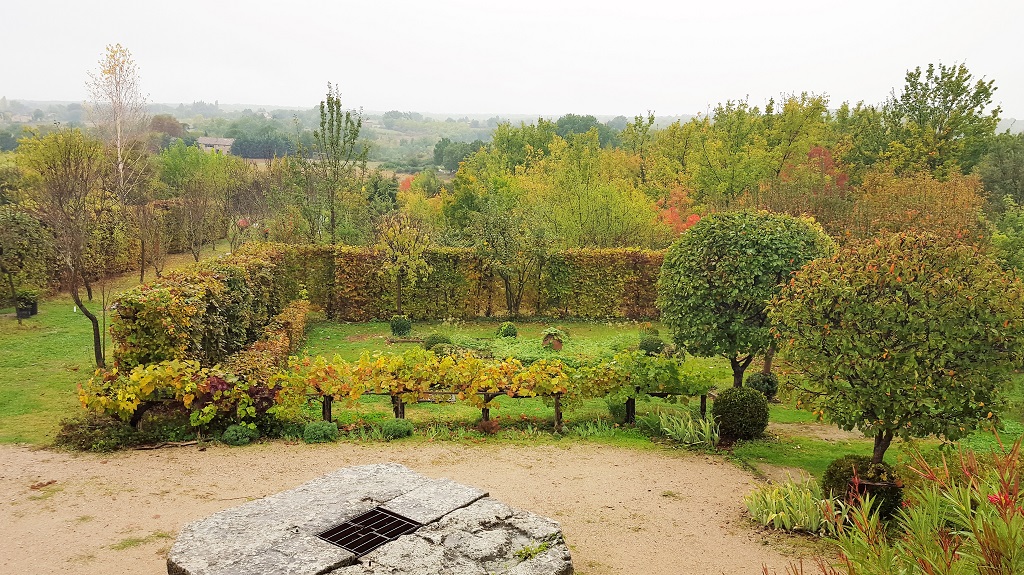
French Gardens Are Functional with a Focus on Aesthetics
We realized that we still didn’t know how to work the stove and it was doubtful that Aileen had come by to fix the key and leave us stove instructions. It was a bit of cat herding, but Dan called her a couple of times to motivate her. I think we were beginning to understand the plight Peter Mayle was afflicted with, when he tried to get things fixed at his home, his first year in Provence.
In addition to us both reading “A Year in Provence” in anticipation of this trip, we also both read Elizabeth Bard’s “Picnic in Provence.” She weaves a larger story, but in short, she moved to Cereste, a little town in the Luberon and in 2013, she and her husband opened up an ice cream shop, called Scaramouche. In June of 2015, they opened up another shop in Paris. Dan had visited the one in Paris and indulged in some lemon thyme ice cream. Their shop was closed in Cereste, but we did find it on our way home, as we wanted to at least connect the real place with the book.
Some cat herding events later, we finally knew how to operate the stove. It heats through induction and basically it won’t turn on unless there is a pot or pan on it. Then it gets hot right away. This was a type of stove that neither of us had ever used. The same stove was present at our cooking classes and I thought it was electric, so when the teacher told us that Anne-Sophie switched her restaurant last month to this type of stove from gas, I was confused, if not horrified. But at this moment, it all seemed to make sense.
While we were waiting for information from Aileen, I tried jiggling the key one more time, seeing if I couldn’t get it to come out of the lock. Just at that moment Dan exclaimed “Guess what David Lebovitz’s blog is on? You won’t believe it.” The email had just come in, and it was titled “French Keys”. Serendipitous, no doubt. By the way, David’s blog is a big favorite of ours. If you have any interest in food, cooking, and French culture, I recommend it heartily.
A short while later, we were enjoying a saute of onions and mushrooms, braised chard, roasted winter squash and duck pate and fourme d’ambert (blue cheese) – all drizzled with mandarin olive oil and balsalmic véloute (velvet textured). High quality ingredients, very simple preparations. Bon appetite.
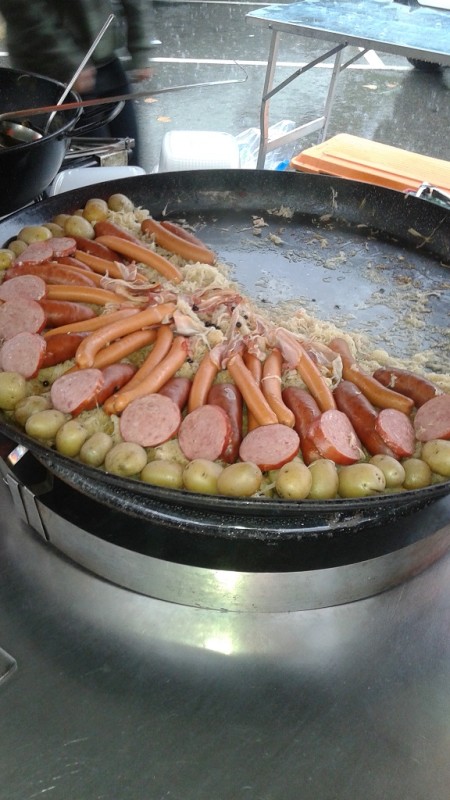
The French Make Potatoes and Kielbasa Look Artistic
